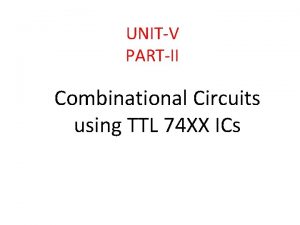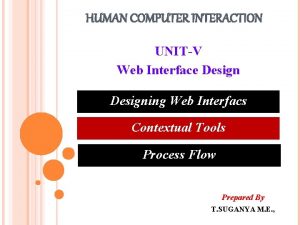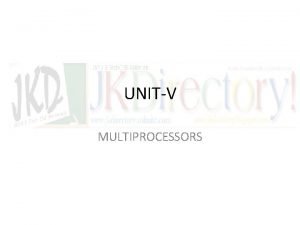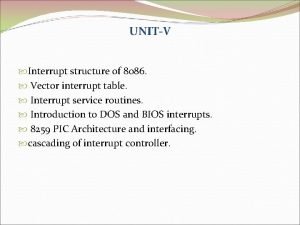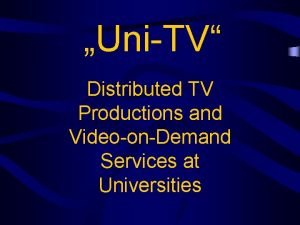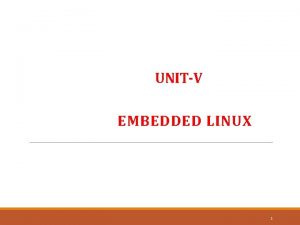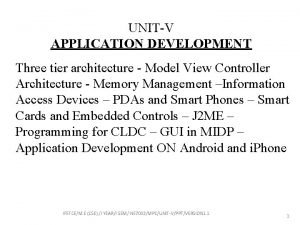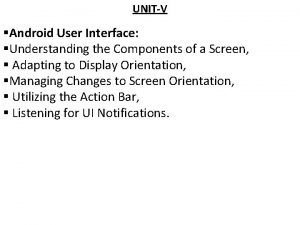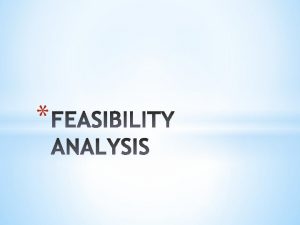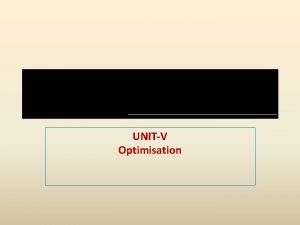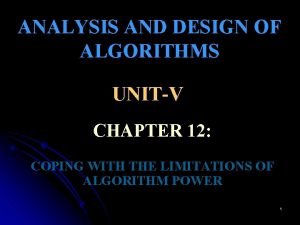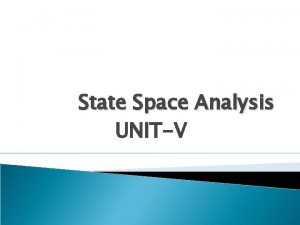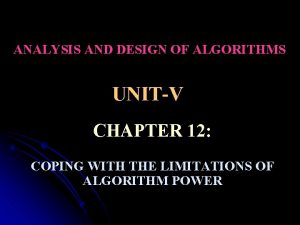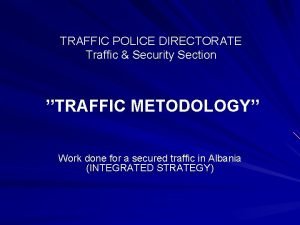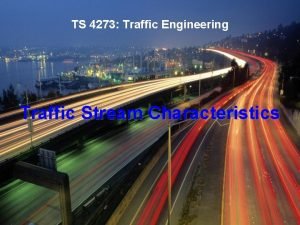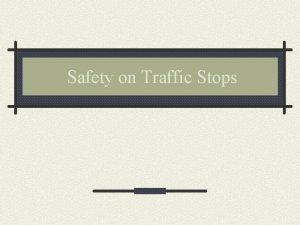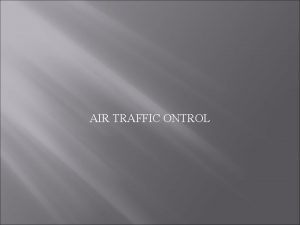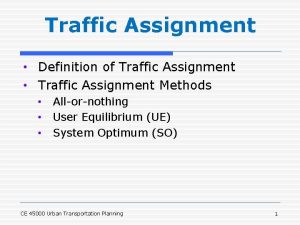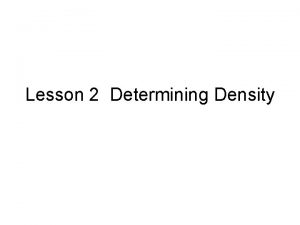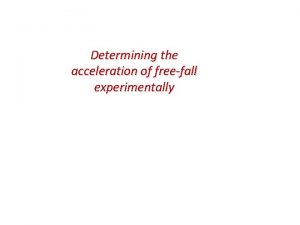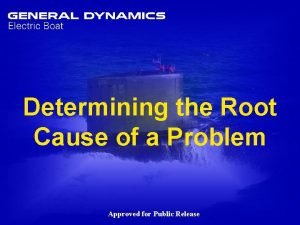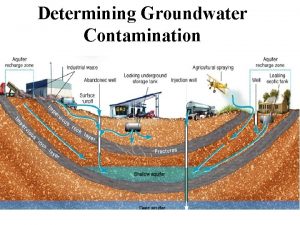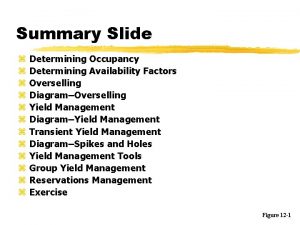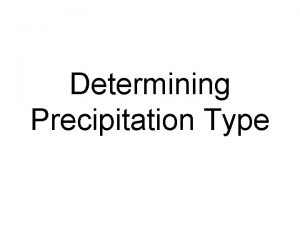UNITV TRAFFIC ANALYSIS Traffic Analysis Method for determining




















- Slides: 20

UNIT-V TRAFFIC ANALYSIS

Traffic Analysis • Method for determining the cost effectiveness of various sizes and configurations of networks. • Helps us to decide how many telephone trunks we should use to service organizations. • Formulas were used; now, computer modeling is almost exclusively used.

Uses of Traffic Engineering • Utilizing the correct number of links at the best price point. – Cost versus effectiveness • What do you engineer to? – The busiest hour? – The average amount of traffic? – The minimum required that will still retain customers? • How are our road systems engineered?

Grade of Service • GOS – How many callers will be refused service. – This could be a busy tone or a redirection to voice mail. • Telephone companies have designed their networks so that the probability that a circuit will be blocked must be between 1 and 5 percent. – To get a lower blocking percentage than 1 percent gets exponentially more difficult.

Traffic Analysis • Erlang’s ideas are used extensively in: – Data networks – Voice networks – Busy hour traffic on interstates – Banking/Supermarket queuing theory. – General max/min optimization problems

Holding Time: Cellularsystemsuseoneormoreoffourdifferenttechniquesofaccess(TDMA, F DMA, CDMA, SDMA). See. Cellularconcepts. Letacaseof. Code. Division. Multiple. A ccessbeconsideredfortherelationshipbetweentrafficcapacityandcoverage(a reacoveredbycells). CDMAcellularsystemscanallowanincreaseintrafficcapaci tyattheexpenseofthequalityofservice. • In. TDMA/FDMAcellularradiosystems, Fixed. Channel. Allocation(FCA)isusedto allocatechannelstocustomers. In. FCAthenumberofchannelsinthecellremains constantirrespectiveofthenumberofcustomersinthatcell. Thisresultsintraffic congestionandsomecallsbeinglostwhentrafficgetsheavy. • Abetterwayofchannelallocationincellularsystemsis. Dynamic. Channel. Alloca tion(DCA)whichissupportedbythe. GSM, DCSandothersystems. DCAisabetter waynotonlyforhandlingburstycelltrafficbutalsoinefficientlyutilisingthecellul arradioresources. DCAallowsthenumberofchannelsinacelltovarywiththetraf ficload, henceincreasingchannelcapacitywithlittlecosts. Sinceacellisallocated agroupoffrequencycarriesforeachuser, thisrangeoffrequenciesisthebandwi dthofthatcell, BW. Ifthatcellcoversanarea. Ac, andeachuserhasbandwidth. Bthe nthenumberofchannelswillbe. BW/B. Thedensityofchannelswillbe. Thisformu lashowsthatasthecoveragearea. Acisincreased, thechanneldensity

Importantparameterslikethecarriertointerference(C/I)ratio, spectralefficiencya ndreusedistancedeterminethequalityofserviceofacellularnetwork. Channel. Hol ding. Timeisanotherparameterthatcanaffectthequalityofserviceinacellularnetw ork, henceitisconsideredwhenplanningthenetwork. Itmustbementionedthatitis notaneasytasktocalculatethechannelholdingtime. (Thisisthetimea. Mobile. Statio n(MS)remainsinthesamecellduringacall). Channelholdingtimeisthereforelessth ancallholdingtimeifthe. MStravelsmorethanonecellashandoverwilltakeplacean dthe. MSrelinquishesthechannel. Practically, itisnotpossibletodetermineexactlyt hechannelholdingtime. Asaresult, differentmodelsexistsformodellingthechanne lholdingtimedistribution. Inindustry, agoodapproximationofthechannelholdingt imeisusuallysufficienttodeterminethenetworktrafficcapability. Oneofthepaper sin. Keyand. Smithdefineschannelholdingtimeasbeingequaltotheaverageholdingt imedividedbytheaveragenumberofhandoverspercallplusone. Usuallyanexpone ntialmodelispreferredtocalculatethechannelholdingtimeforsimplicityinsimulat ions. Thismodelgivesthedistributionfunctionofchannelholdingtimeanditisanap proximationthatcanbeusedtoobtainestimateschannelholdingtime. Theexpone ntialmodelmaynotbecorrectlymodellingthechannelholdingtimedistributionaso therpapersmaytrytoprove, butitgivesanapproximation. Channelholdingtimeisn oteasilydeterminedexplicitly, callholdingtimeanduser'smovementshavetobede terminedinordertoimplicitlygivechannelholdingtime. Themobilityoftheuserand thecellshapeandsizecausethechannelholdingtimetohaveadifferentdistribution functiontothatofcallduration(callholdingtime). Thisdifferenceislargeforhighlym obileusersandsmallcellsizes. Sincethechannelholdingtimeandcalldurationrelati onshipsareaffectedbymobilityandcellsize, forastationary. MSandlargecellsizes, c hannelholdingtimeandcalldurationarethesame.

Traffic load and cell size �Semakin banyak trafik dibangkitkan, semakin banyak diperlukan base station untuk melayani pelanggan. Jumlah dari base station sederhananya sama dengan jumlah sel, �Bagaimana menambah jumlah pengguna yang dapat dilayani ? –cel splitting �This simply works by dividing the cells already present into smaller sizes hence increasing the traffic capacity –Sektorisasi �The cost of equipment can also be cut down by reducing the number of base stations through setting up three neighbouring cells, with the cells serving three 120°sectors with different channel groups.









End-to-End principle • Easier to replace and update routers inside the network since fewer requirements to satisfy. • Limiting code to simple tasks reduces likelihood of software/ hardware bugs or algorithmic flaws that bring the network down. • Extending the network is easier. • But inadequate at protecting the networks from attacks

What Is Congestion? -1 • Data network is a network of queues • Congestion occurs when the number of packets being transmitted through the network approaches the packet handling capacity of the network Input and Output Queues at a Network Node

What Is Congestion? - 2 • If the arrival rate is larger than the transmission rate, queues grow to infinity unresolvable congestion • If the arrival rate is smaller than the transmission rate – queues grow and congestion starts as the arrival rate approaches to the transmission rate (i. e. number of packets being transmitted through the network approaches the packet handling capacity of the network) – Generally 80% utilization is critical – growth in queue = more delay – queues may overflow since it is of finite capacity • Congestion control aims to keep the number of packets below the level at which performance starts to degrade dramatically

Effects of Congestion Arriving packets are stored at input buffers Routing decision made Packet moves to appropriate output buffer Packets queued for output are transmitted as fast as possible • If packets • • – arrive too fast to be processed/ routed, input buffers will fill up – arrive faster than that can be transmitted, output buffers will fill up • Precautions – discard packets – flow control over neighbors
 7427 ic pin diagram
7427 ic pin diagram Interactive single-page process is a type of
Interactive single-page process is a type of Characteristics of multiprocessing
Characteristics of multiprocessing Interrupt vector table in 8086
Interrupt vector table in 8086 Unitv
Unitv Unitv download
Unitv download 3 tier architecture ppt
3 tier architecture ppt Unitv android
Unitv android What is transport number in physical chemistry
What is transport number in physical chemistry Chardakov
Chardakov Comparative advantage output formula
Comparative advantage output formula Market feasibility in entrepreneurship
Market feasibility in entrepreneurship Incomina
Incomina All traffic solutions
All traffic solutions Symposium is a type of
Symposium is a type of Formuö
Formuö Typiska drag för en novell
Typiska drag för en novell Nationell inriktning för artificiell intelligens
Nationell inriktning för artificiell intelligens Returpilarna
Returpilarna Shingelfrisyren
Shingelfrisyren En lathund för arbete med kontinuitetshantering
En lathund för arbete med kontinuitetshantering
